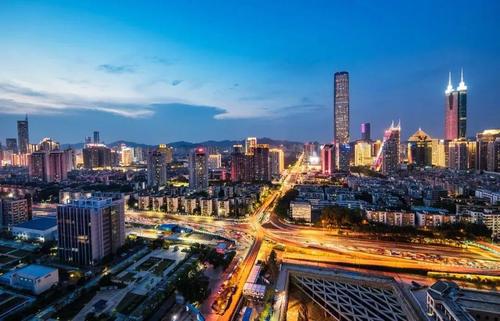China's Economy in 2020
(Economic Recovery and Development Initiatives)
In 2020, China was the only major economy in the world to achieve positive growth, defying the negative impact of the COVID-19 pandemic and uncertainty of the external environment. Such a hard-won performance helped to console the world on economic recovery. The spokesperson of the Chinese Embassy in Singapore is to introduce some key measures on China's economic recovery in 2020:
First, policies and measures were timely introduced to respond to the changing COVID-19 dynamics. China puts people's interests first – nothing is more precious than people's lives. While going all out to contain the virus, China seized the window of opportunity and lost no time in restarting business activities. The country prioritized the availability of medical supplies and daily essentials supplies. After the epidemic was brought under control, China normalized prevention and control mechanisms and introduced measures of a sizable scale to help enterprises and energize the market, so as to promote the economic recovery in an orderly manner.

Second, macro-policies were introduced and enforced directly targeting market entities. China adopted tax and fee cuts and loan extension to help those weak in managing crisis and coping with risks, especially self-employed people and SMEs. For large companies, the "peer-to-peer" servicing method was adopted to better coordinate the industrial chain and supply chain. China issued 1 trillion yuan special anti-pandemic government bonds and reduced corporate burden by 2.5 trillion yuan throughout the year. China's financial institutions made reasonable interest concessions and expedited fee cuts to business as high as 1.5 trillion yuan. China took further measures for the year's increased fiscal funds in a bid to channel the funds straight to the prefecture and county-level governments, directly benefiting businesses and people.

Third, China took a scientific approach in achieving balance in the policy-making. China was pursuing a proactive fiscal policy and a prudent monetary policy and maintained continuity, stability, and sustainability of such policies. With a fine balance between swift decisiveness and sober mind, such policies were appropriate and based on national conditions, and have further space for manoeuver.
Fourth, China kept on deepening reform to spur the vitality of market entities. Continuous deepening of reform has greatly improved the business environment. 201 Belt and Road Initiative cooperation documents have been signed between the Chinese government and 138 countries and 31 international organizations. The FTA pilot area continued to expand, and the Negative List on the market access of foreign investment has been further shortened.